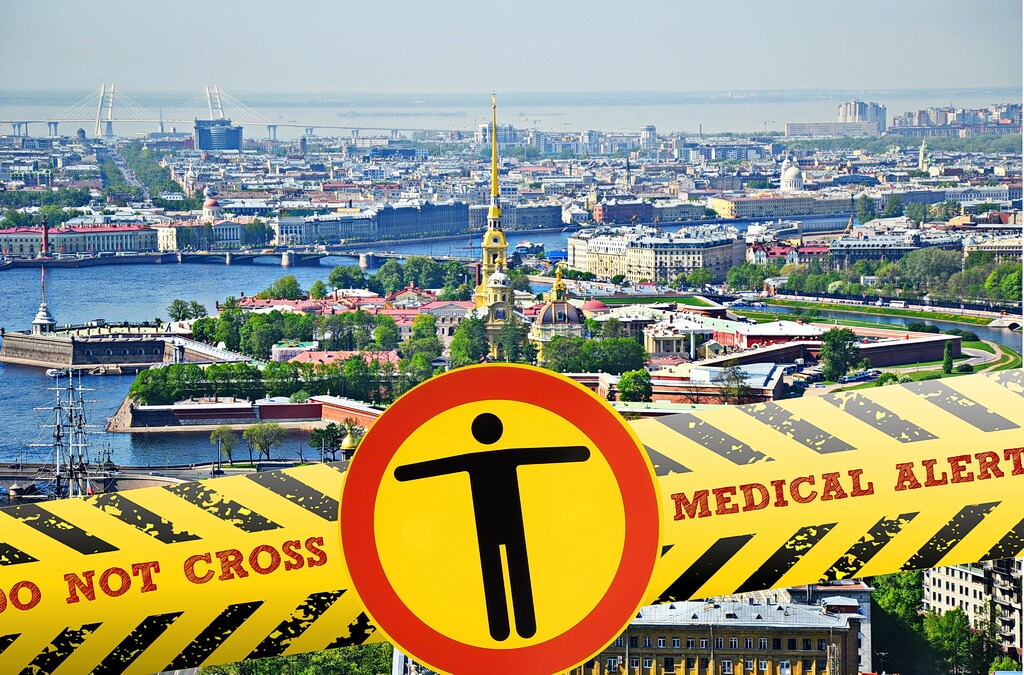St. Petersburg has been living in a coronavirus pandemic mode since March 2020, when the local government enacted the first restrictions. In the winter-summer period 2021, they have been eased or removed thus making the everyday life in the city looking just like it had been in the pre-Covid-19 times.
The post is updated in real-time. Last update: June 2021
What’s life like in St. Petersburg right now?
Generally speaking, you’d hardly notice any difference between the St. Petersburg of summer 2021 and the St. Petersburg of summer 2019. We understand this might sound like a joke to those coming from and living in most European countries, but that’s what you will see just after you walk out of the Pulkovo airport terminal or take off the Sapsan train.
That’s how everyday life in St. Petersburg street looks:
— all entertainments, including night clubs, museums (private like Grigori Rasputin’s apartment as well), excursions, boat trips, cinemas, theaters, are on;
— all eateries and bars, food halls are open both inside and outside without any limits on the attendance;
— no restrictions on travel within the city or beyond it, including trips to the cities of Velikiy Novgorod, Vyborg, the island of Valaam, etc.;
— no prohibition or restrictions for open-air mass gatherings, be it a concert or an excursion.
Just looks at the photo and video below:
Coronavirus Restrictions In Place
So, what does remind us about the pandemic, except daily news of new positive cases, 800+ on an average, and repeated calls by the local government not to relax and continue wearing masks?
Well, some restrictions do exist, they are valid till July 12:
— masks are mandatory in public places indoors, we mean, any transport, shop, theater, etc. As you are opening the door, you should put on a mask. That doesn’t apply to your hotel room or flat or any private house you visit. You can also take off your mask at an eatery after getting your meal. No mask is required outdoors;
— a social distancing of 1.5 meters is mandatory whenever you meet other people;
— gloves are also mandatory;
— cultural establishments, cinemas, and museums can allow only limited capacity. For example, the Hermitage museum has designed two routes for visitors, and you can follow only one route that you choose when buying a ticket.
Ferry operator Moby SPL has suspended its trips till July 31, at least. Allegro train between St. Petersburg and Helsinki is now idle. But all other transport is going.
But even all these requirements are hard to notice that only few people (that’s sad) follow them. You will be lucky to manage to see many people with masks on at a bus or a tram. It’s a bit different at the subway, but not much. Gloves are a thing most St. Petersburg residents have left in their wardrobes since the last cold days.
Though mind that things look different in Moscow and on flights within Russia. Moscow authorities are closely controlling that people are complying with the rules, so you will be able to buy goods at a shop without a mask — a case that’s rarely heard of here, in St. Petersburg. And you will be forced off a plane should you refuse to put on a mask and keep it on during a trip, except the time for a meal, of course.
The explanation of the paradox, of this dissonance between the rules and the extremely low compliance rate, lies in the Russian traditional fatalism, the lack of belief in authorities’ wisdom and goodwill as well as reluctance to follow instructions that’s stuck deeply in our DNA.
Another factor here is that the absence of lockdown and mandatory self-isolation in most regions led Russia to the highest number of excessive deaths in the world in 2020-2021, but resulted in a high number of persons with antibodies and immunity.
